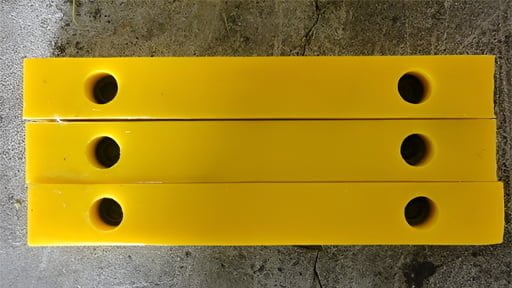Urethane casting is a popular low-volume manufacturing technique commonly used for bridge production purposes. If the term bridge production is uncommon to you, consider a production technique that serves to “bridge” the gap between early prototyping and mass production.

Bridge production helps many businesses to scale up production without incurring expensive mass production expenses when you’re not ready for it but can’t stay at prototyping levels. Urethane casting is one of the most efficient ways of making look-alike models that will serve marketing purposes, business pitches, or even internal ideation testing. It allows for the low-volume production of parts with complex geometries fit for immediate use. Generally, urethane casting is affordable with a quick turnaround time. It also works with a wide range of materials, and the tooling cost is significantly lower. Today, we explore the design guidelines for urethane casting(vacuum casting) to help you make the very best of bridge production operations.
Designing for Urethane Casting
One of the best ways to harness the cost-effectiveness of urethane casting is to ensure that the chances of error are considerably reduced. By adhering to the design guidelines of urethane casting, you will be able to scale up your production from prototype units. Considering that what often comes after urethane casting is injection molding, using DFM guides will equally enable a smooth transition to injection molding operations. The following guidelines will generally achieve better urethane castings for bridge production and ensure that your designs stay relevant for mass production via injection molding.

Wall Thickness
Ensure that you maintain uniformity in the wall thickness throughout your part design. Designing parts with inconsistent wall thickness will often result in defects in the part. Uniformity is also essential for dimensional stability in the casted part.
Designs with uniform wall thickness will experience a smoother flow of the urethane material during casting. Keep in mind that the wall thickness should be consistent with the size of the part to provide adequate support, therefore, ensure that your wall thickness is at least 0.020 inches thick. Where possible, avoid 90-degree walls.
Draft Angles
While urethane castings do not have as much need for drafts as injection molding, using drafts is beneficial for two reasons. First, draft angles mitigate the risk of breakage or warpage of castings and facilitate easy removal after casting. Secondly, if you intend to keep the same design for when you scale up to mass production, factoring the draft will keep your design valid for injection molding operations.
Use at least 0.5 degrees of the draft for your casting. You will need more if your part has some texture or engraving.
Shrinkages
Polyurethane, the active material for urethane casting, has a high coefficient of thermal expansion. What this means is that there will be significant changes when the part is subjected to temperature extremes. Urethane castings that will be used in hot or cold regions will likely experience dimensional changes, which in turn affects the tolerances and size of the part as the temperature changes. To ensure better results, factor in some percentage shrink rates to accommodate for changes that may occur during casting or molding.
Engraving and Embossing
Use a draft when working with parts that will be textured, embossed, or engraved. Similarly, ensure that your lettering or logos are thicker than 0.04 inches to guarantee that they give the desired appearance.
Ribs, Fillets and Bosses
Avoid thick bosses that will leave your design susceptible to sink. Instead, opt for smaller bosses that can attach the part using ribs. For ribs, ensure that their thickness is uniform. Also, make sure the rib thickness is no more than 0.5 times the wall thickness of the part. Include fillets to help you beat sharp corners where stress concentrations lie, and ensure that the fillet radius is more than 0.003m.
Bridge Production with Urethane Casting
Choose our urethane casting solutions for your bridge production and augment all your low-volume post-prototype production needs. Our urethane casting services are affordable, precise, and iterative. Choose from a diverse range of materials, colors, and finishing solutions to personalize your production. Click here to get in touch with us now!











